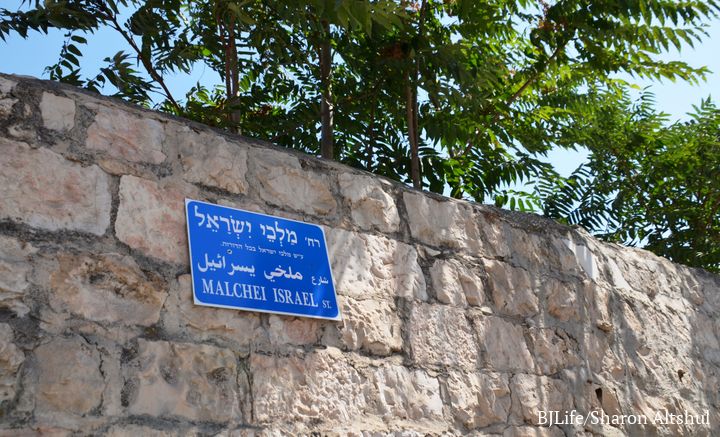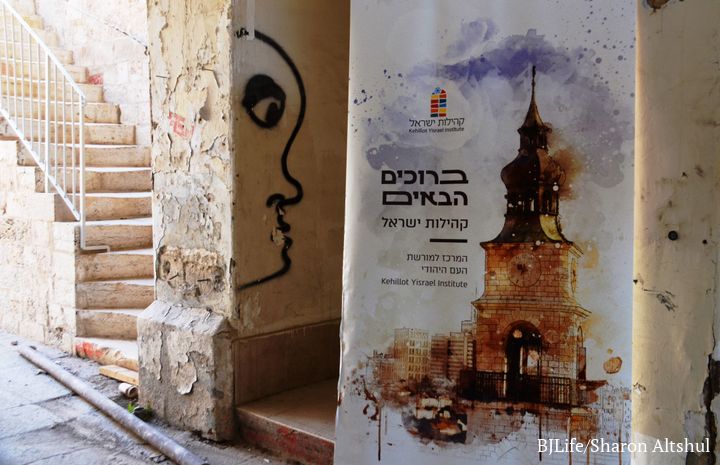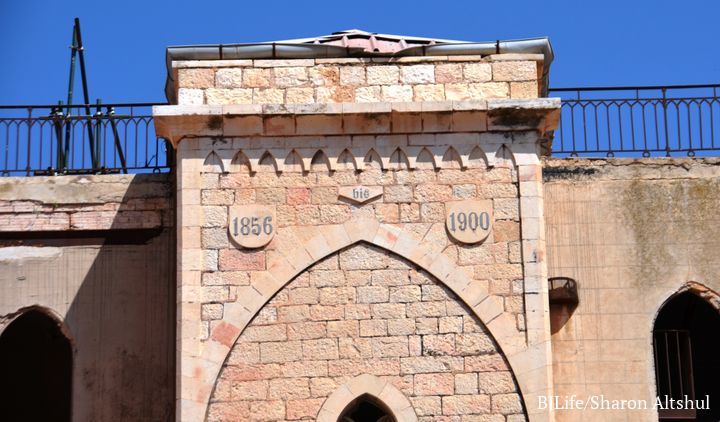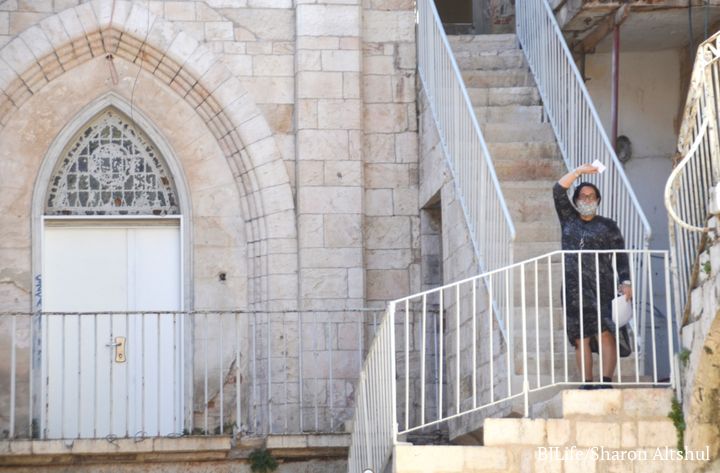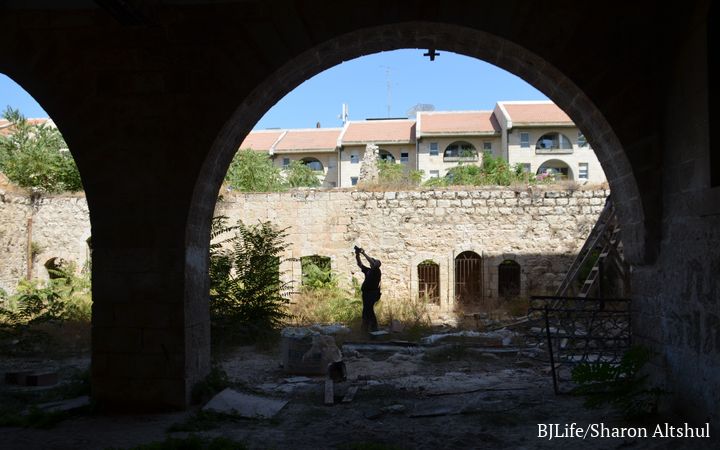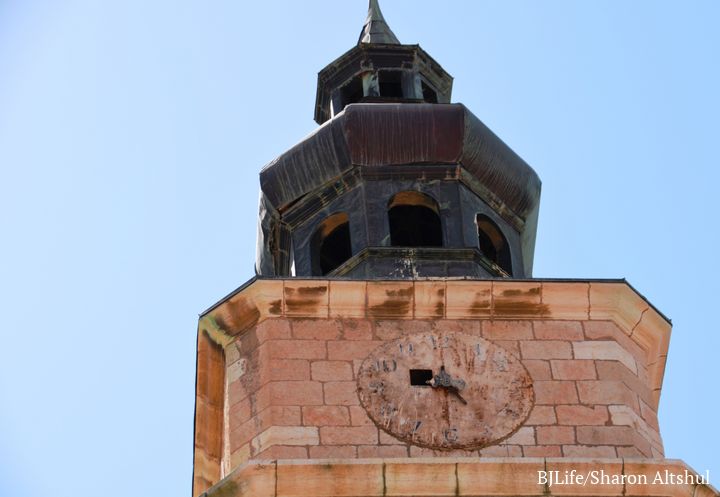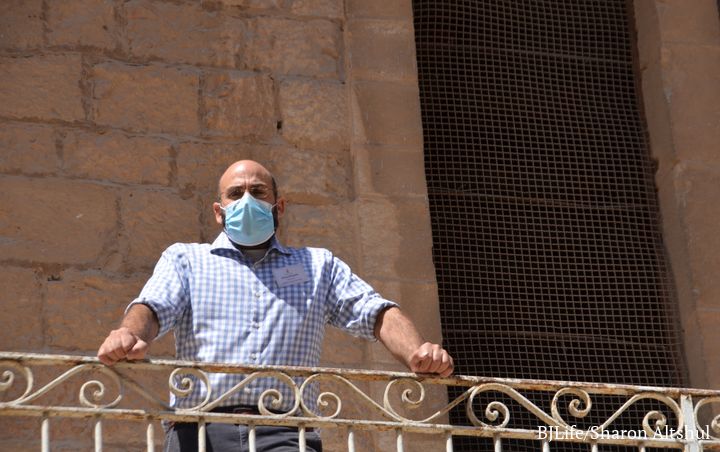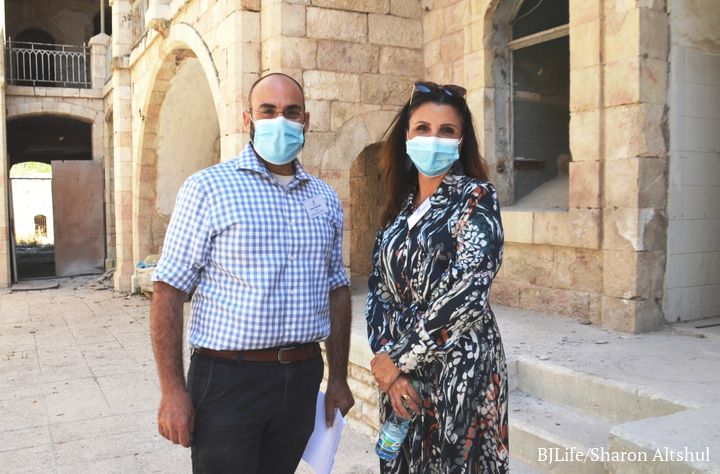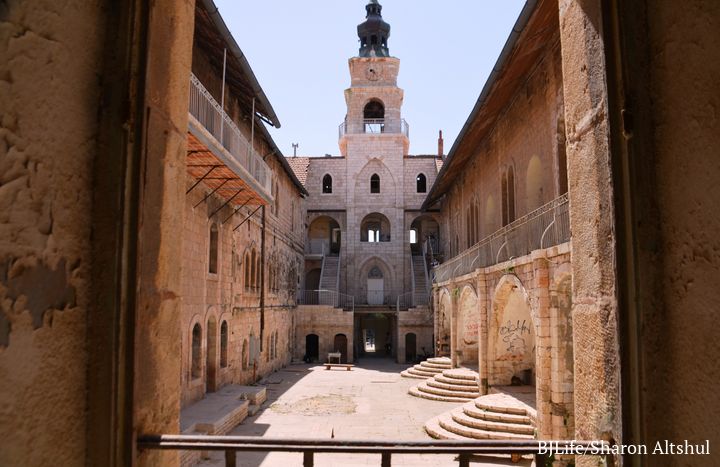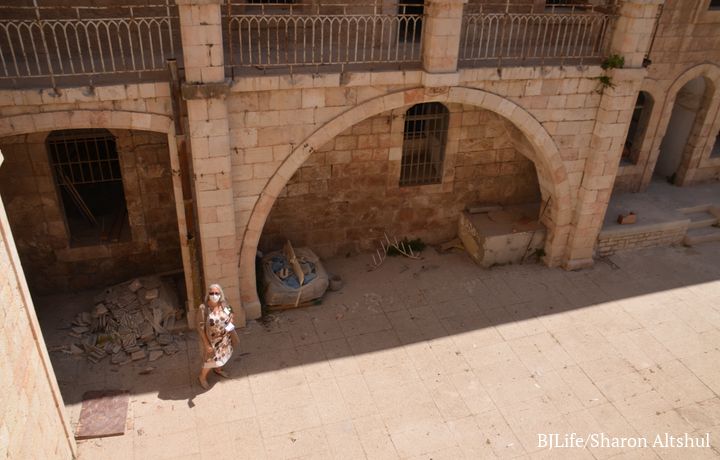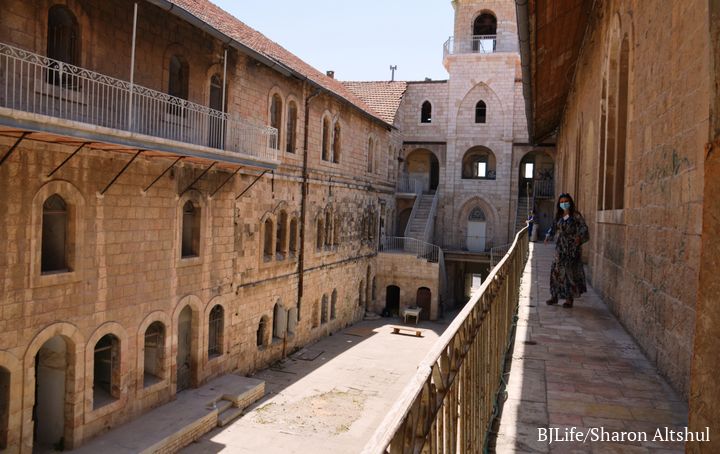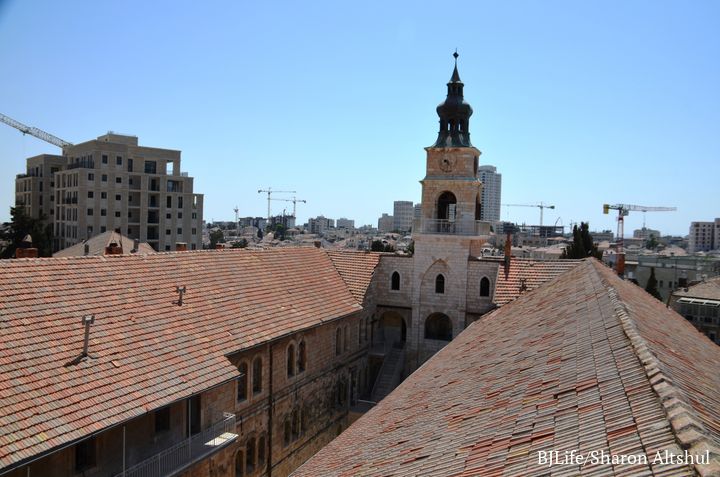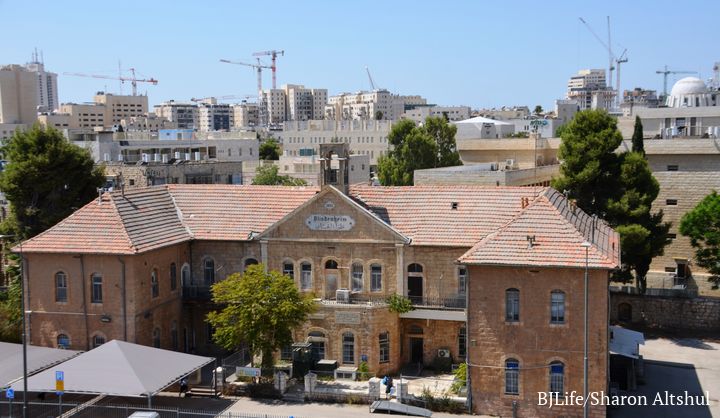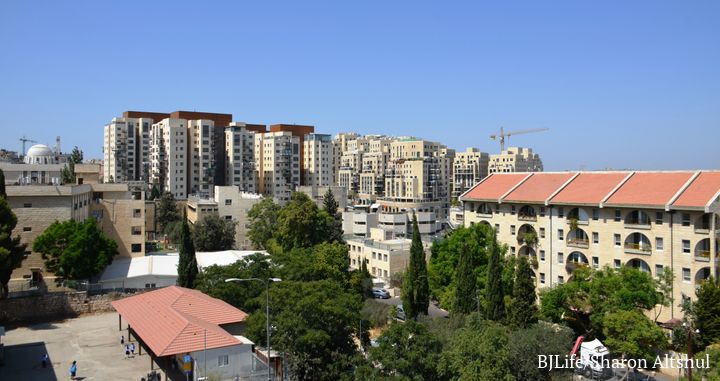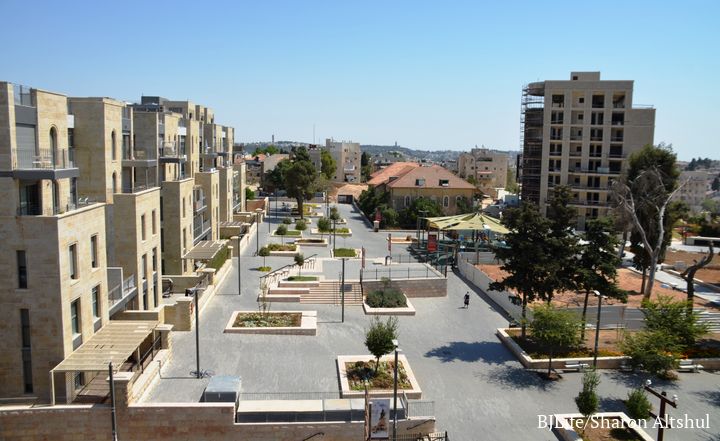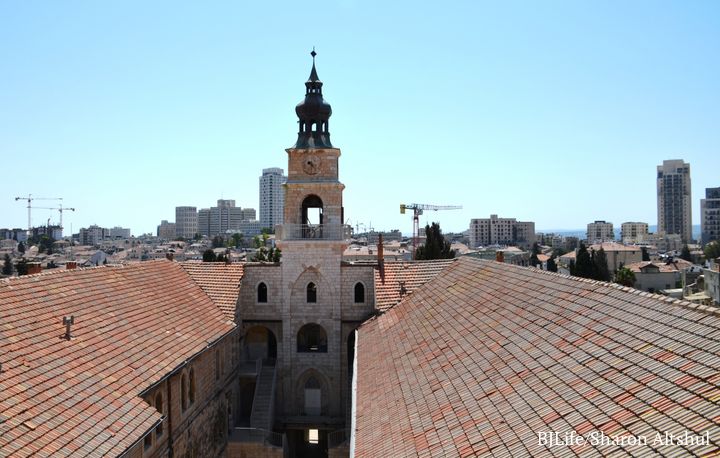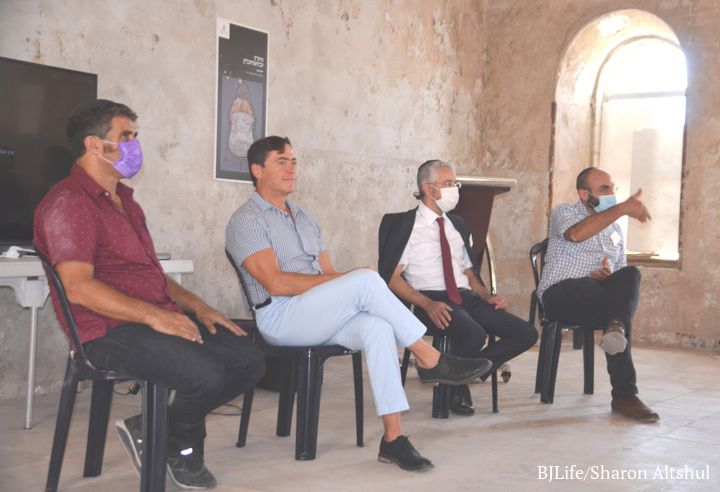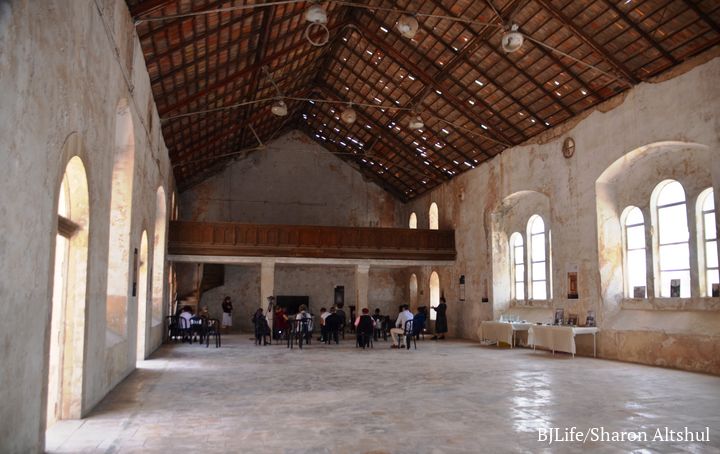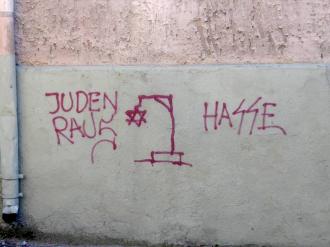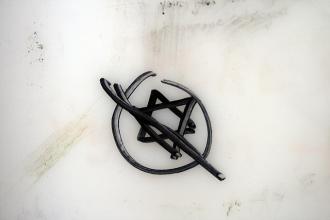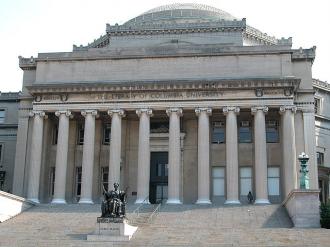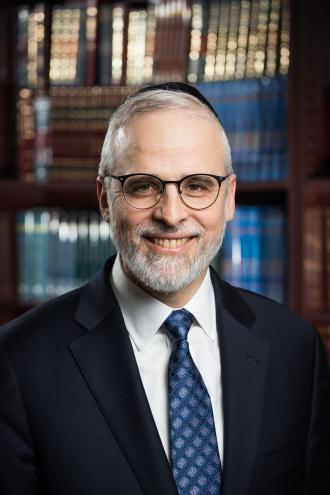Jerusalem, Israel - Sept. 14, 2020 - The Schneller Compound, in the heart of Yerushalayim on Malachi Yisrael Street, has gone from a German orphanage to a military base, and now is to be the location of a new Jewish Heritage Cultural Center and Beit Hakehillot .
Started as a Syrian orphanage in 1860, by German Protestant missionary Johann Ludwig Schneller, it gradually grew to a compound of many buildings, including a school for the blind, a brick factory, printing press, shoe factory, pottery workshop, laundry, dormitories, stables, and a bakery. It functioned until 1940 when the British deported all German personnel at the start of World War II. The British turned the compound into a closed military camp containing the largest ammunition stockpile in the Middle East.
The Haganah took over the building after the British abandoned the camp, and used it as a base of operations during the 1948 Israeli War of Independence. The Schneller Compound then served as an IDF army base until 2008. For the past 12 years, the main building was empty, and in decay. The site was rife for theft of the old building materials, items of value were stolen.
In 2017, the Jerusalem Municipality decided to divide up the Compound with a portion of the complex for private residential construction, and the main old building to serve as a unique experiential, interactive museum and visitor center.
On September 14, 2020, the plans for the development were revealed at a press conference. “We are excited to show you the beginning of this extensive restoration and renovation project, as well as the vision and plans for the building’s new use to house Beit Hakehillot,” said Hanan Benayahu, Director of Kehillot Yisrael Institute. “Beit Hakehillot will introduce a new perspective on Jewish history not seen before, and present something innovative that connects the past to the present with a legacy that guides us for the future."
Beit Hakehillot: The Kehillot Yisrael Experience is to be a multi-level museum and media experience designed to tell the story of the emergence of the Jewish people as a nation, its teachings, and its revolutionary mission in world history. It aims to examine the history of worldwide Jewish communities, their intellectual and artistic creativity, and the cultural dialogue between these communities and their surrounding societies. Plus, it will include the largest private archive of Jewish manuscripts from Jewish communities throughout the world.
The exhibition will present Judaism’s spiritual richness and cultural heritage through the lens of various kehillos formed over the centuries in the aftermath of the destruction of Jerusalem and the forced exile of the Jewish people from the land of Israel after 70 CE. Throughout the generations, these diverse, dispersed communities were inextricably tied together by a network of words, written and oral.
In the compound area, remnants dating back to the Second Temple and early Roman period have been discovered, including a bathhouse and winery. BJL reported previously on archeological finds.
"Jews are the people of the book, and our manuscripts chronicle our history, culture, and character,” said Fleur Hassan-Nahoum, Deputy Mayor of Jerusalem. “This project reflects a journey into the people of the book and their writings. I am extremely excited about this new museum that will be housed in one of the most beautiful historical buildings in Jerusalem.”
Hassan-Nahoum also told how over 20 years ago her when her husband served as a dentist in the IDF, he was based at Schneller. Mention Schneller to Israelis and they begin to relate their memories, remembering past military service with Schneller as their base.
“This isn’t going to be another boring museum filled with artifacts you forget about after ten minutes, it will be a celebration of Jewish culture that will leave visitors feeling excited about being a part of the Jewish nation,” Benayahu explained. “We all have roots from different communities, but do we have any idea how to connect to those roots? Being able to experience the richness of each community – its customs, literature, poetry art, music, liturgy, and folktales – will create a sense of connection, no matter where your family came from. We want visitors to feel excited and proud, to say, ‘Yes, I recognize my Jewish culture. I am part of this Jewish nation.” Eddie Jabobs, Co-Director, Berenbaum-Jacobs Associates, the design team responsible for Beit Hakehillot spoke of connections, especially in these times when so many are not connected because of the current pandemic.
“The Schneller Compound is a virtual time capsule of a 150-year period in Jerusalem’s history,” said Moshe Shapiro, lead architect for the project. "It contains the story of the Jewish people, from the time of the destruction of Jerusalem to pre-state British, the underground, and more. This new project, which celebrates Jewish heritage and culture, closes the circle.”
Shapiro led a tour of the main structure highlighting the various additions over the years. Schneller was the first to build in Jerusalem with flat ceilings. By great expense, he brought iron and wood from the port of Yafo to Jerusalem on camels. Previous centuries wood was obtained in Jerusalem by taking boats apart. He explained that as with any project one works on in Jerusalem, “scratch the surface, and reveal the history of the world."
Join BJL status for engagements, births, deals, levayos, events & more: bit.ly/32HUBnJ
Join an official BJL WhatsApp group for breaking news as it happens: bit.ly/34zdGuF
Berenbaum Jacobs Associates (BJA), an internationally-known museum design firm specializing in Jewish themes is designing the concept for the museum. “The ultimate goal of the Center is to engender a renewed sense of pride and identification in the richness of Jewish heritage, its current relevance, and the vital contribution this heritage can make in the future,” added Jacobs.
Beit Hakehillot will be a celebration of Jewish communities past and present, so we are inviting Jews from around the world to join us in creating it,’” explained Rabbi Avraham Hillel, Kehillot Yisrael CEO. “We are looking forward to connecting more people around the world to the project now, in its early stages, finding ways to collaborate with individuals and institutions to build a center that will best reflect the heritage of their own communities and families, past and present.“
Kehillot Yisrael Institute is a non-profit organization headed by Rabbi Yaakov Hillel, a descendant of prominent families from Baghdad and India. Known as a unique thinker, he leads a long-standing and established network of Jewish institutions and has authored many sefarim. Over the past 50 years, the Institute has accumulated one of the largest private collections of Jewish manuscripts in the world. Under the direction of Rabbi Hillel, the Institute has published more than 700 books, mostly rare editions of unpublished manuscripts, and has digitally documented nearly two million manuscripts, certificates, and historical documents.
To learn more about Beit Hakehillot, follow its progress, or get involved see: www.kyi.org.il.
The photo essay includes images inside and outside of the main compound, including views from the roof, and the program participants mentioned.
